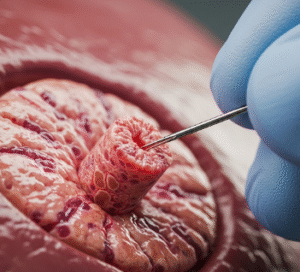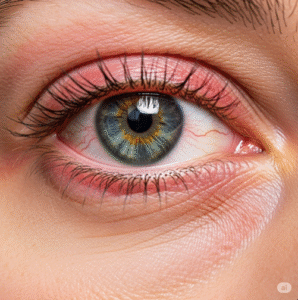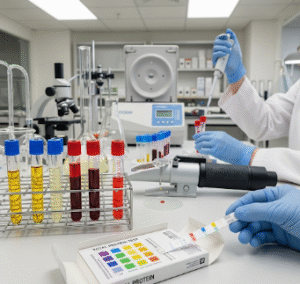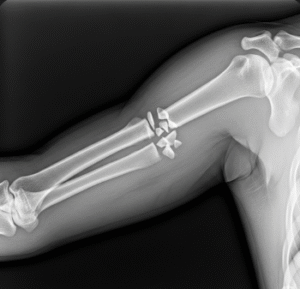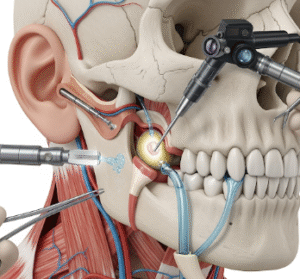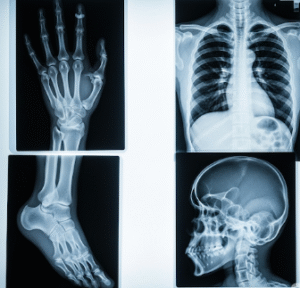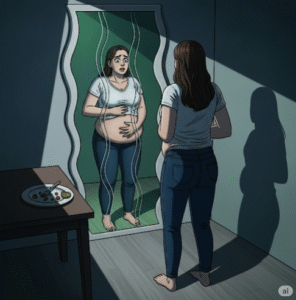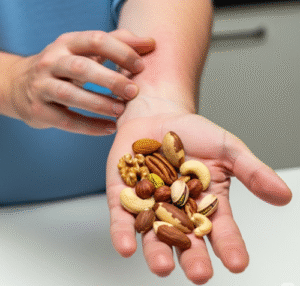Overview
Nasal obstruction, commonly referred to as a blocked or congested nose, occurs when airflow through one or both nostrils is partially or completely restricted. This condition can range from a temporary inconvenience due to a cold to a chronic issue caused by structural abnormalities or underlying medical conditions.
In Korea, management of nasal obstruction focuses on accurate diagnosis, medical treatment, and minimally invasive surgical options when necessary. Proper care helps improve breathing, sleep quality, and overall quality of life.
Key Facts
➤ Nasal obstruction affects people of all ages and can be acute or chronic.
➤ Common causes include allergies, infections, nasal polyps, deviated septum, or enlarged turbinates.
➤ Symptoms often include difficulty breathing through the nose, snoring, and sleep disturbances.
➤ Untreated chronic nasal obstruction may lead to sinus infections, sleep apnea, or reduced quality of life.
➤ In Korea, a combination of medical and surgical treatments is available to relieve symptoms.
What is Nasal Obstruction?
Nasal obstruction refers to partial or complete blockage of the nasal passages, leading to difficulty breathing through the nose.
➔ The obstruction may occur due to:
- Structural causes: deviated septum, enlarged turbinates, or nasal polyps.
- Inflammatory causes: allergic rhinitis, sinus infections, or chronic inflammation.
- External causes: foreign objects, trauma, or swelling from medications.
Obstruction can be unilateral (one side) or bilateral (both sides), and severity may vary depending on the cause.
Symptoms Related to Nasal Obstruction
➤ Difficulty breathing through the nose, especially at night or during exercise.
➤ Nasal congestion or a feeling of fullness in the nose.
➤ Snoring or sleep disturbances, including sleep apnea in severe cases.
➤ Reduced sense of smell (hyposmia) or taste.
➤ Headache, facial pressure, or sinus pain in chronic obstruction.
➤ Mouth breathing, dry mouth, or throat irritation.
Causes / Possible Causes
Nasal obstruction can be caused by structural, inflammatory, infectious, or external factors:
Structural Causes
➤ Deviated nasal septum – misalignment of the septum causing one-sided blockage.
➤ Nasal polyps – soft, painless growths in the nasal lining.
➤ Enlarged turbinates – swelling of nasal tissues that regulate airflow.
➤ Congenital abnormalities – such as choanal atresia in children.
Inflammatory and Allergic Causes
➤ Allergic rhinitis causing inflammation and swelling.
➤ Chronic sinusitis leading to mucosal edema.
➤ Non-allergic irritants such as smoke or pollution.
Infectious Causes
➤ Viral infections like common cold or flu.
➤ Bacterial sinus infections causing mucus buildup and swelling.
Other Causes
➤ Foreign objects in children’s noses.
➤ Trauma or injury causing swelling or structural damage.
➤ Side effects of certain medications causing nasal congestion.
Risk Factors
➤ History of allergies or sinus infections.
➤ Anatomical abnormalities such as deviated septum.
➤ Environmental exposure to pollutants, smoke, or dust.
➤ Frequent upper respiratory infections.
➤ Age-related changes leading to mucosal thickening or reduced nasal airflow.
Complications
If left untreated, nasal obstruction may cause:
➤ Chronic sinusitis or recurrent infections.
➤ Sleep apnea, snoring, and fatigue due to poor airflow.
➤ Reduced sense of smell or taste.
➤ Mouth breathing leading to dry mouth, dental issues, or throat irritation.
➤ Impact on daily functioning, concentration, and quality of life.
When Should I See My Doctor?
Seek medical attention if:
➤ Nasal blockage persists for more than 10 days without improvement.
➤ Associated with severe pain, facial swelling, or fever.
➤ There is recurrent nosebleed or foul-smelling discharge.
➤ Breathing difficulty interferes with sleep, work, or daily activities.
➤ Home remedies and over-the-counter decongestants do not relieve symptoms.
Care and Treatment
Lifestyle and Home Measures
➤ Use saline nasal sprays or irrigation to clear mucus.
➤ Keep indoor air humidified to reduce dryness and congestion.
➤ Avoid allergens and irritants like smoke or strong odors.
➤ Maintain hydration to thin nasal secretions.
➤ Elevate head during sleep to improve airflow.
Medical Treatments
➤ Nasal corticosteroid sprays for inflammation.
➤ Antihistamines for allergic causes.
➤ Decongestants for short-term relief (under guidance).
➤ Antibiotics for bacterial sinus infections if necessary.
➤ Surgery for structural issues, including:
- Septoplasty for deviated septum.
- Turbinate reduction for enlarged turbinates.
- Polypectomy for nasal polyps.
Preventive Measures
➤ Identify and manage allergic triggers early.
➤ Avoid smoke, dust, and pollutants.
➤ Maintain good nasal hygiene with saline rinses.
➤ Early intervention for sinus infections.
Treatment Options in Korea
Korea provides advanced ENT care for nasal obstruction:
Diagnostic Services
➤ Physical examination and nasal endoscopy to visualize obstruction.
➤ Imaging such as CT scans for sinus and structural assessment.
➤ Allergy testing for identifying triggers.
Therapies and Supportive Care
➤ Prescription nasal corticosteroids and antihistamines.
➤ Saline irrigation systems and humidification therapy.
➤ Minimally invasive ENT procedures:
- Septoplasty, turbinate reduction, or endoscopic polypectomy.
➤ Combination of Western and traditional Korean medicine for holistic management.
➤ Post-surgical care including rehabilitation and follow-up for long-term outcomes.
✅ In summary: Nasal obstruction is a common condition that can significantly affect breathing and quality of life. Causes include structural abnormalities, infections, allergies, and environmental factors. In Korea, effective treatment includes medical therapy, minimally invasive surgery, and preventive strategies to restore airflow, relieve symptoms, and maintain respiratory health.


